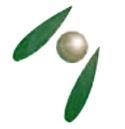Silicon dioxide
Product Details:
Product Description
Name:Silicon dioxide
Synonyms:Quartz
Molecular Formula:SiO2
Molecular Weight:60.08
CAS Registry Number:14808-60-7
EINECS:238-878-4
The chemical compound silicon dioxide, also known as silica (from the Latin silex), is an oxide of silicon with a chemical formula of SiO2 and has been known for its hardness since antiquity. Silica is most commonly found in nature as sand or quartz, as well as in the cell walls of diatoms. It is a principal component of most types of glass and substances such as concrete. Silica is the most abundant mineral in the earth's crust.SiO2 has a number of distinct crystalline forms in addition to amorphous forms. With the exception of stishovite and fibrous silica, all of the crystalline forms involve tetrahedral SiO4 units linked together by shared vertices in different arrangements.
Applications
It is used in the production of various products.
Inexpensive soda-lime glass is the most common and typically found in drinking glasses, bottles, and windows.
A raw material for many whiteware ceramics such as earthenware, stoneware and porcelain.
A raw material for the production of Portland cement.
A food additive, primarily as a flow agent in powdered foods, or to absorb water (see the ingredients list for).
An oxide layer grown on silicon is hugely beneficial in microelectronics. It is a superior electric insulator, with high chemical stability. In electrical applications, it can protect the silicon, store charge, block current, and even act as a controlled pathway to allow small currents to flow through a device. The traditional method of manufacture such an oxide layer has been to heat the silicon in a high-temperature furnaces within an oxygen ambient (thermal oxidation).
As hydrophobic silica it is used as a defoamer component.
As hydrated silica in toothpaste (abrasive to remove plaque.)
As a high-temperature thermal protection fabric.
In cosmetics for its light-diffusing properties and its absorbency.
Liquid silicon dioxide (colloidal silica) is used as a wine and juice fining agent.
As a glidant in pharmaceutical products silicon dioxide aids powder flow when tablets are formed.
Inhalation health effects
Inhaling finely divided crystalline silica dust or fumed silica in very small quantities (OSHA allows 0.1 mg/m3) over time can lead to silicosis, bronchitis or (much more rarely) cancer, as the dust becomes lodged in the lungs and continuously irritates them, reducing lung capacities (silica does not dissolve over time). This effect can be an occupational hazard for people working with sandblasting equipment, products that contain powdered crystalline silica and so on. Children, asthmatics of any age, allergy sufferers and the elderly (all of whom have reduced lung capacity) can be affected in much shorter periods of time.
Item Specification Result
Appearance White powder White powder
Purity of SiO2 (after ignition) 95% Min. 98.5%
Whiteness 93% min. 98%
Residue on 320 mesh screen 98% Min. 99%
Water absorption value / 54 mL/20g
Refractive index 1.435-1.46 1.45
pH (5% suspension) 6.5-8.5 6.9
Loss on drying (at 105©) 10% Max. 5.7%
Residue on ignition 8.3% Max. 4.4%
Iron assay 1000 ppm max. 170 ppm
Sulphate content Negative Negative
Soluble dissociated salt (Sodium sulfate) 0.4% Max. 0.4%Max
Heavy metal (as Pb) 20 ppm Max. 20 ppmMax
Arsenic (As) 2 ppm Max. 2 ppmMax
Total plate count 200 cfu/g Max. 45 cfu/g
Packing: 8kg/bag or 10kg/bag
Storage: stored in a dry and cool place, keep away from light and heat and any acid substance.
Shelf life: two years when stored properly.
Silicon dioxide
Other Products in 'Starch Derivatives ' category
 |
A & Z Group Co.,Ltd
All Rights Reserved.(Terms of Use) Developed and Managed by Infocom Network Private Limited. |
 English
English Spanish
Spanish French
French German
German Italian
Italian Chinese (Simplified)
Chinese (Simplified) Japanese
Japanese Korean
Korean Arabic
Arabic Portuguese
Portuguese





 Send Inquiry
Send Inquiry